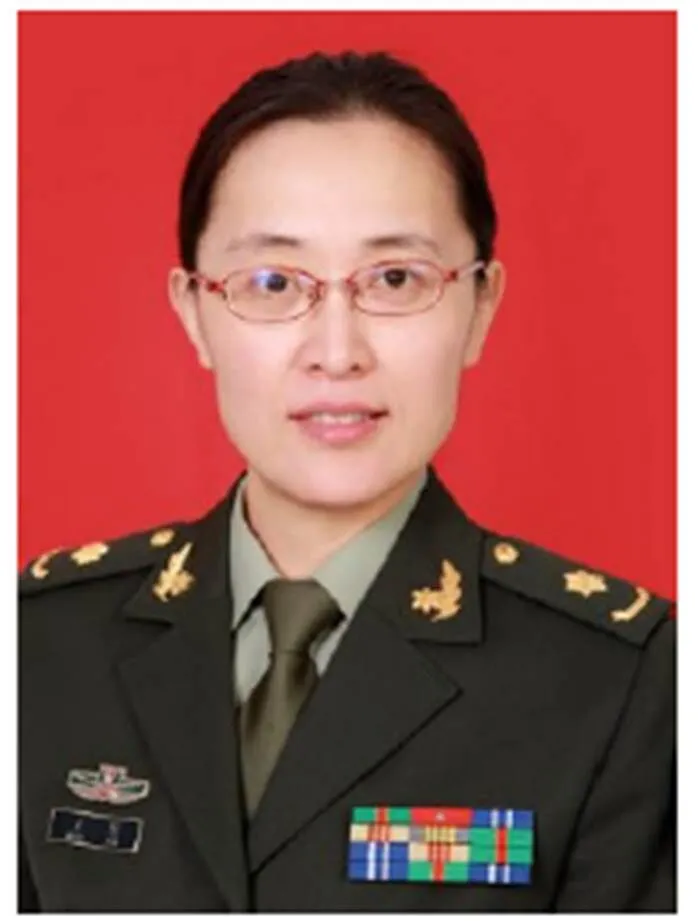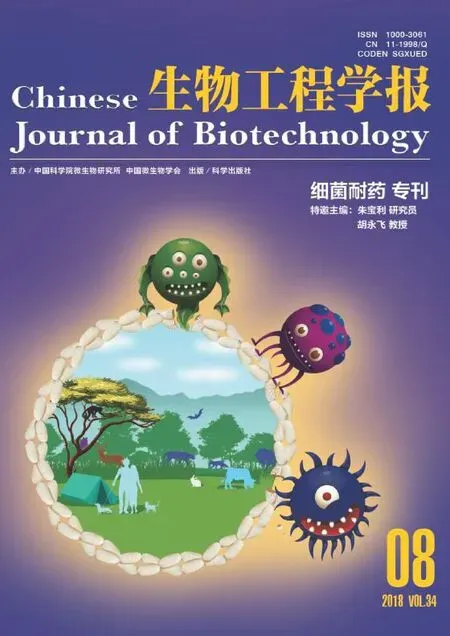细菌自然转化的机制及影响因素
2018-08-28宁年智王慧
宁年智,王慧
王慧 军事医学研究院微生物流行病研究所研究员,博士生导师。主要从事病原微生物进化、致病机理与防治基础研究,先后主持和承担国家传染病重大专项、国家新药创制重大专项、国家973计划、国家重点研发计划、国家自然科学基金课题20余项。在高致病病原新毒力因子发现、病原菌适应性进化以及感染防治技术方面取得重要进展。研究成果在、、、、等国内外学术期刊发表论文80余篇。获得中国发明专利17项,获得美国、日本、澳大利亚、欧洲等国际发明专利5项。现兼任全军科学技术委员会生物技术专业委员会常委。

细菌自然转化的机制及影响因素
宁年智,王慧
军事科学院军事医学研究院 微生物流行病研究所 病原微生物生物安全国家重点实验室,北京 100071

宁年智, 王慧. 细菌自然转化的机制及影响因素. 生物工程学报, 2018, 34(8): 1297–1305.Ning NZ, Wang H. Mechanism and influencing factors of natural transformation in bacteria. Chin J Biotech, 2018, 34(8): 1297–1305.
水平基因转移对耐药基因传播、编码毒素基因质粒的扩散和毒力岛的转移等过程具有重要的生物学意义。自然转化是指具有感受态的细菌从外界摄取并整合裸露DNA,是水平基因转移的方式之一。细菌发生自然转化极大地促进了耐药基因在不同细菌间的播散,导致细菌对抗生素耐药,给临床治疗带来极大的困难。许多细菌具备自然转化能力,但不同细菌自然转化过程存在着差异。细菌自然感受及转化的诱发及效率亦受到多种因素的影响。文中着重于阐述不同细菌的自然转化机制及其影响因素。
自然感受态,自然转化,Ⅳ型菌毛,耐药基因
细菌间水平基因转移主要有3种机制,包括接合 (Conjugation)、转导 (Transduction) 和自然转化 (Natural transformation)。自然转化是指处于感受态的细菌从外界摄取并整合裸露DNA (比如噬菌体、质粒和染色质) 的过程。自然感受 (Natural competence) 是自然转化过程中的重要一环,是指细菌在自然状态下能够从外界获取裸露DNA并转运至细胞质中。细菌中普遍存在着自然感受和转化现象,并且已经有许多文章在这方面进行论述[1-3]。自然转化与临床细菌感染存在密切关系。首先细菌可通过自然转化途径获取毒力因子。在1928年,Griffith等在肺炎链球菌的毒性转化实验中发现了自然转化现象的存在,无毒性的肺炎链球菌菌株可转化有毒株的DNA从而可获取毒力因子[4]。Tribble等研究证明牙龈卟啉单胞菌间主要通过自然感受及转化进行DNA交换,形成细菌基因多样性,有助于该菌在人体内生存并逃避机体免疫[5]。其次细菌可通过自然转化途径获取耐药基因。鲍曼不动杆菌是我国医院内感染的主要致病菌之一,主要引起获得性肺炎尤其是呼吸机相关性肺炎、菌血症、尿路感染、继发性脑膜炎等。近年来,鲍曼不动杆菌的耐药率逐年上升,甚至出现了泛耐药或者全耐药菌株[6-8]。多数耐药鲍曼不动杆菌含有耐药质粒,对耐药质粒进行测序后发现大部分质粒缺少质粒接合所需要的转移基因和移动基因,表明鲍曼不动杆菌部分耐药质粒不是通过接合作用进行播散,而可能是通过自然转化途径[9]。鉴于自然转化与细菌进化的密切关系,越来越多研究者投身于细菌自然转化的研究当中。本综述的主要目的是介绍细菌自然转化机制及其影响因素的研究进展。
1 致病菌的自然转化现象
霍乱弧菌是人类霍乱的病原体,可引起烈性肠道传染病。研究发现其在浮游生物的几丁质外骨骼表面生长时可从外界摄取DNA并重组至基因组中[10]。霍乱弧菌可通过自然转化获取毒力因子,Blokesch等的实验表明霍乱弧菌O1亚型获取O抗原基因簇后可转变为O139亚型[11]。实验条件下霍乱弧菌A1552菌株的自然转化效率可达2×10–4[12]。另一种具备自然转化能力的常见致病菌是脑膜炎奈瑟菌[13],该菌是一种人类共生菌及病原菌,在人体缺乏细菌抗体时可导致脑膜炎或菌血症[14]。不动杆菌属sp.细菌是条件致病菌,常见于医院内感染,被认为均具有自然感受能力[15]。近年来,不动杆菌由于出现多重耐药甚至是全耐药菌株而受到广泛关注。研究不动杆菌的自然感受与转化时,大部分实验是以不动杆菌BD413菌株 (BD413曾用名称是草酸钙不动杆菌BD413[16]) 作为代表菌。不动杆菌BD413作为研究常用的对象是因为其具有很高的自然转化效率,大约为0.1%–0.7%[17],同时该菌摄取的裸露DNA无序列特异性,DNA以单链形式进入细胞[18-19]。相反地,已有的研究表明鲍曼不动杆菌A118菌株对外源质粒 (pDsRed) 或外源gDNA的自然转化效率大约为2×10–8[20];鲍曼不动杆菌M2菌株对外源质粒 (pGEM) 的自然转化效率约为2×10–7[21]。显而易见,鲍曼不动杆菌的自然转化率显著低于不动杆菌BD413的自然转化率。Wilharm等对10株临床分离的鲍曼不动杆菌进行了自然转化研究,发现其转化gDNA的效率均显著高于转化质粒的效率[22]。Ramirez等还发现鲍曼不动杆菌A118菌株对5种不同质粒的转化率有明显差异,转化效率为7.4×102–26.9×102CFU/μg DNA。与大肠杆菌相比,经过长期传代培养后被转化质粒在鲍曼不动杆菌A118菌株内更不容易丢失,具备更强的稳定性,从而增加了基因被整合至细菌染色质的概率[23]。
2 影响自然转化的基因
2.1 Ⅳ型菌毛参与外源DNA摄取
自然转化过程的第一步是外源裸露DNA从细胞表面穿过细胞外膜进入到细胞周间质中。Ⅳ型菌毛是细菌表面常见的附属结构,现有研究表明施氏假单胞菌、霍乱弧菌、肺炎链球菌、淋病奈瑟菌和脑膜炎奈瑟菌等细菌的Ⅳ型菌毛系统参与细胞摄取外源DNA的过程[24-28]。比如在脑膜炎奈瑟菌中,Ⅳ型菌毛从位于外膜上的分泌蛋白pilQ的孔径中穿过,菌毛在延伸与收缩的过程中,使pilQ蛋白打开通道,外源DNA可进入该通道并与通道中相应受体结合后被转运进细胞周间质[28-29]。但是幽门螺杆菌则是由Ⅳ型分泌系统介导外源DNA转运穿越细胞外膜,菌毛直接与细菌表面的DNA结合,通过旋转等方式直接将DNA转运至细胞周间质[30]。在鲍曼不动杆菌中,外源DNA如何穿过细胞外膜进入细胞周间质?2007年Smith等对鲍曼不动杆菌ATCC 17978菌株进行全基因组测序后发现,在该菌株中存在多个与转化相关的基因,并预测这些基因能够编码类Ⅳ型菌毛系统的结构蛋白[31]。另外,2011年有研究对已发表的鲍曼不动杆菌基因组进行分析,发现在鲍曼不动杆菌基因组中存在着许多预测为Ⅳ型菌毛蛋白的基因,这些基因编码的蛋白与其他细菌中的Ⅳ型菌毛蛋白具有同源性[32]。同年,Eijkelkamp等报道鲍曼不动杆菌ATCC 17978菌株在缺乏铁离子的培养环境中失去了蹭动 (Twitching motility) 功能 (需Ⅳ型菌毛参与),其原因是一系列疑似Ⅳ型菌毛蛋白的编码基因表达量轻微下调[33]。随后的研究表明,鲍曼不动杆菌临床菌株可能普遍存在Ⅳ型菌毛结构。在Eijkelkamp等的研究中,所有国际克隆Ⅰ型及部分新克隆型鲍曼不动杆菌菌株均表现出蹭动能力,表明这些菌株可能产生了Ⅳ型菌毛[34];Ramirez等确认一株分离自血液的鲍曼不动杆菌A118具备自然转化能力,但并未研究其自然转化机制[23]。直到2013年,Harding等[21]和Wilharm等[22]分别通过实验证明了Ⅳ型菌毛参与鲍曼不动杆菌自然转化。Ⅳ型菌毛是细菌表面的一种多蛋白附属结构,可见于多种革兰氏阴性杆菌[35-36]。Ⅳ型菌毛通常处于动态平衡状态,可快速地聚合与解聚合,参与细菌的自然转化、蹭动和粘附 (Adherence) 等生物过程。基因编码Ⅳ型菌毛解聚合所需的ATPase,淋病奈瑟菌和铜绿假单胞菌的基因缺失后,Ⅳ型菌毛无法收缩和解聚合,在细菌表面形成多菌毛状态从而可利用显微镜直接观察其结构[37-38]。对鲍曼不动杆菌的基因进行缺失突变,致使Ⅳ型菌毛失去功能,可在菌体表面观察到菌毛结构,同时菌株也失去了自然转化能力,表明Ⅳ型菌毛参与鲍曼不动杆菌的自然转化过程[21-22]。Harding等的研究还证明鲍曼不动杆菌M2菌株的Ⅳ型菌毛的主体亚单位是由基因所编码,当基因失活后,鲍曼不动杆菌M2表面的菌毛结构消失;、和基因均参与了Ⅳ型菌毛的合成与装配[21]。
2.2 ComEC通道参与DNA穿越细胞内膜进入细胞质
在细胞周间质内的DNA穿越细胞内膜进入细胞质是自然转化的第2个步骤。研究发现,在所有自然感受细菌中这一过程均由高度保守的细胞内膜通道蛋白ComEC介导[28,39]。与外膜转运DNA的方式不同,由于细胞内膜参与形成并保持细菌与外界环境的离子浓度差,所以细胞内膜不能通过松散的通道进行DNA转运。枯草芽胞杆菌的ComEC膜通道被研究得比较透彻,其ComEC蛋白的感受结构域高度保守,形成的通道被水填充,DNA可通过该通道进入细胞质[39]。在不同细菌种属中,ComEC蛋白其他区域会发生细菌种属特异性变化[39]。研究发现,基因参与不动杆菌BD413的自然转化,而基因的氨基酸序列与枯草芽胞杆菌的基因的氨基酸序列具有高度同源性,表明基因可能参与了不动杆菌BD413将外源DNA从细胞周间质转运至细胞内部的过程[40];全基因组测序发现具有自然转化能力的鲍曼不动杆菌A118菌株亦携带基因[41];Wilharm等将多株鲍曼不动杆菌临床菌株的基因敲除后,未能检测到缺失突变株在半固体培养基生长时转化外源质粒[22]。遗憾的是,目前仍未有报道阐述鲍曼不动杆菌ComEC通道转运外源DNA的具体机制。外源DNA穿越细胞内膜前,不同细菌通过不同的方式在细胞周间质内转运DNA。在霍乱弧菌中,进入细胞周间质内的外源DNA首先与DNA结合蛋白ComEA结合,ComEA蛋白推动DNA以单链形式 (ssDNA) 穿越ComEC通道[25,42]。幽门螺杆菌则不依赖于ComEA蛋白,该菌在摄取外源DNA时,由Ⅳ型分泌系统完成细胞周间质内的DNA转运,最终通过ComEC通道进入细胞质[43]。
2.3 DprA基因参与自然转化
在自然转化过程中,进入细胞质内的ssDNA需要多种蛋白辅助其重组至染色质上。比较基因组学研究发现所有具备转化能力的细菌都存在着基因[44]。基因在大部分细菌的自然转化过程中均起到重要作用:实验表明该基因缺失后,细菌自然转化效率发生显著变化,变化幅度与细菌种类和DNA底物种类相关[13,45-49]。细菌通过同源重组将基因整合至染色质的过程依赖于基因。Quevillon-Cheruel等研究发现DprA蛋白与RecA蛋白相互作用是肺炎链球菌发生转化的基础,同时自然转化的效率与DprA蛋白和RecA相互作用并形成稳定复合体的能力密切相关[50]。DprA蛋白还与ssDNA结合,避免其被细胞内的核酸酶降解[51]。在枯草芽胞杆菌中,依赖于的染色质转化和非依赖于的质粒转化途径都需要基因的参与。该菌在发生染色质转化时,细胞质内的单链结合蛋白SsbB和SsbA首先结合至ssDNA上并解除其二级结构,同时阻止RecA蛋白装配至ssDNA上。DprA蛋白存在时,其可结合至ssDNA并使单链结合蛋白SsbB和SsbA脱离,促发RecA介导的DNA链交换,导致同源重组;在转化质粒时,DprA蛋白介导质粒单链退火形成完整的环状质粒结构[52]。
3 影响自然转化的外部因素及调控
3.1 营养补给提升不动杆菌的自然转化
早期研究发现,不动杆菌BD413菌株的自然感受与转化能力与环境中的营养状态呈正相关。Palmen等发现刚刚进入生长对数期时,细菌变成感受状态,直到进入生长平台期数小时,即营养贫乏后,自然感受能力才逐渐下降[18]。其他研究者也得出相同的结论,当不动杆菌BD413菌株的过夜培养物被接种至新鲜培养基时,细菌的自然转化效率达到最高峰[53]。基因和基因是不动杆菌自然转化的必需基因,但研究发现这两个基因的转录水平与自然转化并非正相关[53-54]。基因的表达水平在培养的静止末期达到高峰[53];基因的转录随着生长周期而改变并在静止末期达到高峰[54]。综合以上数据,研究者认为细菌在静止末期已经具备自然转化的基础;将细菌接种至新鲜培养基可为其提供足够的能量,从而发生自然转化[53-54]。对于鲍曼不动杆菌而言,提升营养亦可诱发其自然感受与转化。在研究鲍曼不动杆菌自然转化时,研究者发现鲍曼不动杆菌M2菌株和鲍曼不动杆菌A118菌株在富营养状态下成为感受状态并发生自然转化[20-21],但其具体机制尚未见报道。在1993年,Palmen等发现培养环境中的Ca2+离子浓度可影响不动杆菌BD413菌株的自然转化。此后虽然缺乏其他菌种的实验验证,但这一结论被认为适用于整个不动杆菌属。直到2016年,Traglia等研究发现提升培养环境中的Ca2+离子浓度或添加适量牛血清白蛋白 (0.2%) 可提升鲍曼不动杆菌的自然转化效率;此时鲍曼不动杆菌的基因及基因表达量都显著上调[20]。
3.2 几丁质能诱发霍乱弧菌自然转化
霍乱弧菌常见于河流、湖泊等水域环境中的甲壳浮游生物的表面,并可降解甲壳和利用其中的几丁质作为碳源进行生命活动[55]。2005年,Meibom等首先报道了霍乱弧菌的自然转化现象,霍乱弧菌在几丁质表面生长时可从外界摄取裸露的DNA并整合至基因组上[10]。几丁质可被降解为可溶性的几丁质低聚体,低聚体可被霍乱弧菌的组氨酸激酶感受器ChiS识别,从而促进和基因的表达。基因编码一类小调控RNA,该RNA可促进tofX mRNA的翻译,产物蛋白能诱导自然转化相关基因的表达[3,56]。有证据表明几丁质诱发的自然转化与霍乱毒素质粒的播散密切相关[57]。
3.3 DNA损伤促进幽门螺杆菌的自然转化
幽门螺杆菌是一种感染率非常高的人体致病菌,在所有生长周期均表现出固有的自然转化能力[58]。幽门螺杆菌的基因重组频率非常高,导致其具备明显的基因多样性[59]。目前唯一被证实能促进幽门螺杆菌自然转化的因素是DNA损伤。环丙沙星是一种常用抗生素,可导致细菌DNA双链断裂。幽门螺杆菌的自然转化依赖于T4SS 系统,Dorer等发现细菌经环丙沙星处理后,部分T4SS基因的转录显著上调,同时自然转化效率提升4–5倍[60]。抗生素和紫外线导致的DNA损伤亦可诱发嗜肺军团菌的自然转化[61]。
3.4 营养匮乏促进流感嗜血杆菌自然转化
流感嗜血杆菌感染人体时,其定植部位多为上呼吸道,该部位可供细菌利用的营养和能量源比较贫乏。流感嗜血杆菌的自然转化诱发或许与缺乏理想的碳源相关,早有文献报道该菌在生长进入静止期或者被接种至乏养培养基时可诱发自然转化[62-63]。基因是流感嗜血杆菌自然转化的上游调控因子,该基因与其他感受态细菌的基因具有同源性[63]。在营养匮乏状态下,该基因的表达上调,从而导致下游处于13个操纵子控制下的共26个感受态基因 (比如) 的转录显著提高[62,64-66]。
3.5 影响细菌自然转化的其他因素
淋病奈瑟菌的自然转化效率在接近人体温度 (37 ℃) 时达到最大值,但是其调控机制目前尚不清楚[67]。Wilharm等对28株鲍曼不动杆菌临床菌株进行自然转化研究,发现有10株菌可在含0.5%琼脂的半固体培养基生长时发生自然转化,但是当琼脂的浓度提升到1.5%后,未能检测到细菌发生自然转化[22]。最近,Traglia等系统地研究了影响鲍曼不动杆菌自然转化的因素。研究发现,温度和渗透压并不能影响鲍曼不动杆菌A118菌株的自然转化;相反pH值对自然转化有显著影响,当实验pH值靠近血液的pH值 (pH 7.35–7.45) 时自然转化效率最高,自然转化效率随着pH值的降低而降低[20]。
4 小结与展望
自然转化在细菌获取耐药基因及毒力因子的过程中起到重要作用。在自然转化过程中,大部分细菌是通过Ⅳ型菌毛系统将外源DNA从细菌表面转运至细胞周间质,然后通过ComEC通道将位于细胞周间质内的外源DNA继续转运至细胞质内,最终外源DNA在DprA蛋白的作用下在细菌内独立表达或者整合至染色质中。细菌的自然转化受到营养条件、外界物理与化学因素的影响。
细菌的自然转化是一个复杂的过程,需要多系统协调共同参与,不同细菌的自然转化机制具有差异。目前细菌自然转化的机制研究多限于抗生素敏感菌株,尚缺少合适的技术手段对多重耐药菌株的自然转化进行研究。自然转化导致细菌耐药,甚至形成多重耐药,多重耐药菌株可能具有更强自然转化能力,对这类细菌进行研究往往更具有临床意义。探究细菌感受态的诱发因素及作用机制是未来研究的重要方向,可为临床实践中控制细菌耐药发展提供借鉴;外源DNA穿越细胞内膜时以ssDNA的形式进入,在DNA上共价结合额外基团可阻断该步骤,导致无法直接观察该过程,因此dsDNA如何被加工成ssDNA并转运进细胞质的过程仍有待探究;Ⅳ型菌毛合成与装配机制仍有待研究。解决这些问题可加强我们对细菌自然转化机制的了解。
[1] Chen I, Dubnau D. DNA uptake during bacterial transformation. Nat Rev Microbiol, 2004, 2(3): 241–249.
[2] Dubnau D. DNA uptake in bacteria. Annu Rev Microbiol, 1999, 53(1): 217–244.
[3] Seitz P, Blokesch M. Cues and regulatory pathways involved in natural competence and transformation in pathogenic and environmental Gram-negative bacteria. FEMS Microbiol Rev, 2013, 37(3): 336–363.
[4] Griffith F. The Significance of Pneumococcal Types. J Hyg, 1928, 27(2): 113–159.
[5] Tribble GD, Rigney TW, Dao DH, et al. Natural competence is a major mechanism for horizontal DNA transfer in the oral pathogen. mBio, 2012, 3(1): e00231-11.
[6] Giamarellou H, Antoniadou A, Kanellakopoulou K.: a universal threat to public health? Int J Antimicrob Agents, 2008, 32(2): 106–119.
[7] Hsueh PR, Teng LJ, Chen CY, et al. Pandrug-resistantcausing nosocomial infections in a university hospital, Taiwan. Emerg Infect Dis, 2002, 8(8): 827–832.
[8] Fournier PE, Vallenet D, Barbe V, et al. Comparative genomics of multidrug resistance in. PLoS Genet, 2006, 2(1): e7.
[9] Fondi M, Bacci G, Brilli M, et al. Exploring the evolutionary dynamics of plasmids: thepan-plasmidome. BMC Evol Biol, 2010, 10: 59.
[10] Meibom KL, Blokesch M, Dolganov NA, et al. Chitin induces natural competence in. Science, 2005, 310(5755): 1824–1827.
[11] Blokesch M, Schoolnik GK. Serogroup conversion ofin aquatic reservoirs. PLoS Pathog, 2007, 3(6): e81.
[12] Lo Scrudato M, Borgeaud S, Blokesch M. Regulatory elements involved in the expression of competence genes in naturally transformable. BMC Microbiol, 2014, 14: 327.
[13] Hovland E, Beyene GT, Frye SA, et al. DprA from: properties and role in natural competence for transformation. Microbiology, 2017, 163(7): 1016–1029.
[14] Stephens DS, Greenwood B, Brandtzaeg P. Epidemic meningitis, meningococcaemia, and. Lancet, 2007, 369(9580): 2196–2210.
[15] de Vries J, Wackernagel W. Integration of foreign DNA during natural transformation ofsp. by homology-facilitated illegitimate recombination. Proc Natl Acad Sci USA, 2002, 99(4): 2094–2099.
[16] Young DM, Parke D, Ornston LN. Opportunities for genetic investigation afforded bya nutritionally versatile bacterial species that is highly competent for natural transformation. Annu Rev Microbiol, 2005, 59(1): 519–551.
[17] Juni E, Janik A. Transformation ofcalco-aceticus (). J Bacteriol, 1969, 98(1): 281–288.
[18] Palmen R, Vosman B, Buijsman P, et al. Physiological characterization of natural transformation in. J Gen Microbiol, 1993, 139(2): 295–305.
[19] Lorenz MG, Reipschläger K, Wackernagel W. Plasmid transformation of naturally competentin non-sterile soil extract and groundwater. Arch Microbiol, 1992, 157(4): 355–360.
[20] Traglia GM, Quinn B, Schramm ST, et al. Serum albumin and Ca2+are natural competence inducers in the human pathogen. Antimicrob Agents Chemother, 2016, 60(8): 4920–4929.
[21] Harding CM, Tracy EN, Carruthers MD, et al.strain M2 produces type IV pili which play a role in natural transformation and twitching motility but not surface-associated motility. mBio, 2013, 4(4): e00360-13.
[22] Wilharm G, Piesker J, Laue M, et al. DNA uptake by the nosocomial pathogenoccurs during movement along wet surfaces. J Bacteriol, 2013, 195(18): 4146–4153.
[23] Ramirez MS, Don M, Merkier AK, et al. Naturally competentclinical isolate as a convenient model for genetic studies. J Clin Microbiol, 2010, 48(4): 1488–1490.
[24] Meier P, Berndt C, Weger N, et al. Natural transformation ofby single-stranded DNA requires type IV pili, competence state and. FEMS Microbiol Lett, 2002, 207(1): 75–80.
[25] Matthey N, Blokesch M. The DNA-uptake process of naturally competent. Trends Microbiol, 2016, 24(2): 98–110.
[26] Laurenceau R, Péhau-Arnaudet G, Baconnais S, et al. A type IV pilus mediates DNA binding during natural transformation in. PLoS Pathog, 2013, 9(6): e1003473.
[27] Aas FE, Løvold C, Koomey M. An inhibitor of DNA binding and uptake events dictates the proficiency of genetic transformation in: mechanism of action and links to Type IV pilus expression. Mol Microbiol, 2002, 46(5): 1441–1450.
[28] Krüger NJ, Stingl K. Two steps away from novelty–principles of bacterial DNA uptake. Mol Microbiol, 2011, 80(4): 860–867.
[29] Assalkhou R, Balasingham S, Collins RF, et al. The outer membrane secretin PilQ frombinds DNA. Microbiology, 2007, 153(5): 1593–1603.
[30] Stingl K, Müller S, Scheidgen-Kleyboldt G, et al. Composite system mediates two-step DNA uptake into. Proc Natl Acad Sci USA, 2010, 107(3): 1184–1189.
[31] Smith MG, Gianoulis TA, Pukatzki S, et al. New insights intopathogenesis revealed by high-density pyrosequencing and transposon mutagenesis. Genes Dev, 2007, 21(5): 601–614.
[32] Antunes LCS, Imperi F, Carattoli A, et al. Deciphering the multifactorial nature ofpathogenicity. PLoS ONE, 2011, 6(8): e22674.
[33] Eijkelkamp BA, Hassan KA, Paulsen IT, et al. Investigation of the human pathogenunder iron limiting conditions. BMC Genomics, 2011, 12: 126.
[34] Eijkelkamp BA, Stroeher UH, Hassan KA, et al. Adherence and motility characteristics of clinicalisolates. FEMS Microbiol Lett, 2011, 323(1): 44–51.
[35] Mattick JS. Type IV pili and twitching motility. Annu Rev Microbiol, 2002, 56(1): 289–314.
[36] Ayers M, Howell PL, Burrows LL. Architecture of the type II secretion and type IV pilus machineries. Future Microbiol, 2010, 5(8): 1203–1218.
[37] Wolfgang M, Park HS, Hayes SF, et al. Suppression of an absolute defect in type IV pilus biogenesis by loss-of-function mutations in, a twitching motility gene in. Proc Natl Acad Sci USA, 1998, 95(25): 14973–14978.
[38] Whitchurch CB, Mattick JS. Characterization of a gene,, required for twitching motility but not phage sensitivity in. Mol Microbiol, 1994, 13(6): 1079–1091.
[39] Draskovic I, Dubnau D. Biogenesis of a putative channel protein, ComEC, required for DNA uptake: membrane topology, oligomerization and formation of disulphide bonds. Mol Microbiol, 2005, 55(3): 881–896.
[40] Friedrich A, Hartsch T, Averhoff B. Natural transformation in mesophilic and thermophilic bacteria: identification and characterization of novel, closely related competence genes insp. strain BD413 andHB27. Appl Environ Microbiol, 2001, 67(7): 3140–3148.
[41] Traglia GM, Chua K, Centrón D, et al. Whole-genome sequence analysis of the naturally competentclinical isolate A118. Genome Biol Evol, 2014, 6(9): 2235–2239.
[42] Seitz P, Modarres HP, Borgeaud S, et al. ComEA is essential for the transfer of external DNA into the periplasm in naturally transformablecells. PLoS Genet, 2014, 10(1): e1004066.
[43] Hofreuter D, Odenbreit S, Haas R. Natural transformation competence inis mediated by the basic components of a type IV secretion system. Mol Microbiol, 2001, 41(2): 379–391.
[44] Johnston C, Martin B, Fichant G, et al. Bacterial transformation: distribution, shared mechanisms and divergent control. Nat Rev Microbiol, 2014, 12(3): 181–196.
[45] Sun YH, Exley R, Li YW, et al. Identification and characterization of genes required for competence in. J Bacteriol, 2005, 187(9): 3273–3276.
[46] Beernink HTH, Morrical SW. RMPs: recombination/ replication mediator proteins. Trends Biochem Sci, 1999, 24(10): 385–389.
[47] Attaiech L, Olivier A, Mortier-Barrière I, et al. Role of the single-stranded DNA-binding protein SsbB in pneumococcal transformation: maintenance of a reservoir for genetic plasticity. PLoS Genet, 2011, 7(6): e1002156.
[48] Yadav T, Carrasco B, Myers AR, et al. Genetic recombination in: a division of labor between two single-strand DNA-binding proteins. Nucleic Acids Res, 2012, 40(12): 5546–5559.
[49] Yadav T, Carrasco B, Serrano E, et al. Roles ofDprA and SsbA in RecA-mediated genetic recombination. J Biol Chem, 2014, 289(40): 27640–27652.
[50] Quevillon-Cheruel S, Campo N, Mirouze N, et al. Structure-function analysis of pneumococcal DprA protein reveals that dimerization is crucial for loading RecA recombinase onto DNA during transformation. Proc Natl Acad Sci USA, 2012, 109(37): E2466–E2475.
[51] Bergé M, Mortier-Barrière I, Martin B, et al. Transformation ofrelies on DprA- and RecA-dependent protection of incoming DNA single strands. Mol Microbiol, 2003, 50(2): 527–536.
[52] Yadav T, Carrasco B, Hejna J, et al.DprA recruits RecA onto single-stranded DNA and mediates annealing of complementary strands coated by SsbB and SsbA. J Biol Chem, 2013, 288(31): 22437–22450.
[53] Porstendorfer D, Gohl O, Mayer F, et al. ComP, a pilin-like protein essential for natural competence insp. Strain BD413: regulation, modification, and cellular localization. J Bacteriol, 2000, 182(13): 3673–3680.
[54] Herzberg C, Friedrich A, Averhoff B., a novel competence gene required for natural transformation ofsp. BD413: identification, characterization, and analysis of growth-phase-dependent regulation. Arch Microbiol, 2000, 173(3): 220–228.
[55] Keyhani NO, Roseman S. Physiological aspects of chitin catabolism in marine bacteria. Biochim Biophys Acta-Gen Sub, 1999, 1473(1): 108–122.
[56] Yamamoto S, Izumiya H, Mitobe J, et al. Identification of a chitin-induced small RNA that regulates translation of thegene, encoding a positive regulator of natural competence in. J Bacteriol, 2011, 193(8): 1953–1965.
[57] Udden SMN, Zahid MSH, Biswas K, et al. Acquisition of classical CTX prophage fromO141 by El Tor strains aided by lytic phages and chitin-induced competence. Proc Natl Acad Sci USA, 2008, 105(33): 11951–11956.
[58] Baltrus DA, Guillemin K. Multiple phases of competence occur during thegrowth cycle. FEMS Microbiol Lett, 2006, 255(1): 148–155.
[59] Morelli G, Didelot X, Kusecek B, et al. Microevolution ofduring prolonged infection of single hosts and within families. PLoS Genet, 2010, 6(7): e1001036.
[60] Dorer MS, Fero J, Salama NR. DNA damage triggers genetic exchange in. PLoS Pathog, 2010, 6(7): e1001026.
[61] Charpentier X, Kay E, Schneider D, et al. Antibiotics and UV radiation induce competence for natural transformation in. J Bacteriol, 2011, 193(5): 1114–1121.
[62] Herriott RM, Meyer EM, Vogt M. Defined nongrowth media for stage II development of competence in. J Bacteriol, 1970, 101(2): 517–524.
[63] Redfield RJ., amutation causing greatly enhanced spontaneous competence. J Bacteriol, 1991, 173(18): 5612–5618.
[64] Macfadyen LP. Regulation of competence development in. J Theor Biol, 2000, 207(3): 349–359.
[65] MacFadyen LP, Chen D, Vo HC, et al. Competence development byis regulated by the availability of nucleic acid precursors. Mol Microbiol, 2001, 40(3): 700–707.
[66] Redfield RJ, Cameron ADS, Qian Q, et al. A novel CRP-dependent regulon controls expression of competence genes in. J Mol Biol, 2005, 347(4): 735–747.
[67] Sparling PF. Genetic transformation ofto streptomycin resistance. J Bacteriol, 1966, 92(5): 1364–1371.
(本文责编 陈宏宇)
Mechanism and influencing factors of natural transformation in bacteria
Nianzhi Ning, and Hui Wang
State Key Laboratory of Pathogen and Biosecurity, Beijing Institute of Microbiology and Epidemiology Academy of Military Medical Sciences, Academy of Military Sciences, Beijing100071, China
Horizontal gene transfer contributes to the spread of antibiotic-resistance cassettes, the distribution of toxin-encoding phages and the transfer of pathogenicity islands. Natural transformation, which is the process of competent cells to uptake free DNA from environment and to recombine this DNA into the chromosome, is a mode of horizontal gene transfer. Natural transformation promotes the spread of antibiotic-resistance cassettes among different bacteria, resulting in the emergence of antibiotic resistant bacteria. The emergence of antibiotic resistant pathogens poses an enormous threat to the treatment of infections. Natural transformation could occur in many bacteria, but the mechanism many be different in different bacteria. Also, the inducer and efficiency of natural transformation in different bacteria are influenced by various factors. This review focuses on the mechanism and influencing factors of natural transformation in bacteria.
natural competence, natural transformation, type Ⅳ pilus, antibiotic resistant genes
January 4, 2018;
April 9, 2018
National Basic Research Program of China (973 Program) (No. 2015CB554202).
Hui Wang. Tel/Fax: +86-10-66948587; E-mail: geno0109@vip.sina.com
国家重点基础研究发展计划 (973计划) (No. 2015CB554202) 资助。
10.13345/j.cjb.180005
